HOME | ABOUT US | MEDIA KIT | CONTACT US | INQUIRE
HOME | ABOUT US | MEDIA KIT | CONTACT US | INQUIRE
Numbers alone don’t create a center of excellence when it comes to health-care providers. Their values, their training, their skill and compassion are what sets them apart.
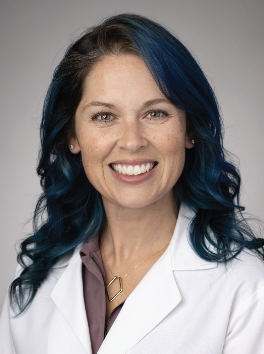
The question comes at a moment that, for many, is framed by shock, surprise and fear. It arrives with the diagnosis of a serious health issue or physical impairment, one that could affect not just you, but your family and your livelihood.
At that instant, it’s only natural to ask, “Who’s the best doctor to treat this?”
The answer to your question will NOT come from a Google search or through AI. As a practical matter, the advice gleaned from most of those sites is worth exactly the price of the search. And forget what that friend of a friend of your second cousin had to say about their procedures—their lack of a medical degree says enough about their qualifications for recommending a physician.
No, the best way to find the best doctor is by asking one of the best. And for 27 years, Ingram’s has done just that with our Top Doctors feature. From a growing array of thousands of physicians serving a metro area that runs from Topeka to Sedalia and St. Joseph to Harrisonville, we’ve spotlighted hundreds of physicians to date, and each year, we go back to that ever-widening pool of talent to ask that old, familiar question: If it were you, whom would you seek out for treatment?
Their recommendations are just the starting point for our process to select each year’s class of Top Doctors. This year, we welcome into the fold 18 medical professionals with reputations for being gifted, compassionate providers of health care. These are physicians who are at the level of where they sought out by other physicians for their expertise.
This year’s honorees hail from such varied specialties as cardiology, pulmonology and critical care, obstetrics, internal medicine and transplant surgery, as well as general fields of family practitioner and primary care physician.
Together, they help make Kansas City a center for exceptional health-care delivery. Congratulations to these fine physicians, and to all the nominees for Top Doctors recognition in 2023.
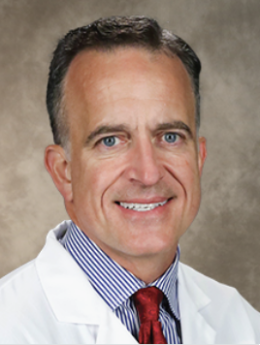 Keenan Berghoff
Keenan Berghoff
North Kansas City Hospital/Meritas Health
For Keenan Berghoff, science is the solution, and it’s a big reason why the focus of his work as a physician is restoring lives through bariatric surgery. Early in his surgical career, he had a chance to observe the emerging treatment. “I saw the results, then I went back and learned the science behind it,” he says. “I got exposed to it, did it, and enjoyed it. There is science that says this makes sense. That, coupled with the fact that in surgery, you often see a patient once but don’t see them again—they move on. With weight loss, you see them regularly in perpetuity, essentially. So the science was interesting, the outcomes were great, and people say that their life has changed forever because of it.” He’s a native of Fort Wayne, Ind., who went to Indiana University for both undergrad work and medical school, though that path didn’t start with a commitment to medicine. “In residency, you’re officially a doctor, but you don’t know yet how to practice what you want to practice,” he says. His medical rotations confirmed surgery as the right path, and then, over his five years in residency through UMKC, working at both Saint Luke’s and Truman medical centers, he found validation. Surgery was the right choice, he says, “because I did know that I wanted to be in a hospital rather than an office.” And surgery simply had more appeal than obstetrics, cardiology, or other specialties. “I couldn’t find one I enjoyed more, and I was eliminating the possibilities one by one. I told myself, ‘Hey, you, make sure there’s not something else out there.’ Roughly 90 percent of his work is in the bariatric/weight loss realm, a practice that has become increasingly popular as the nation has developed a self-inflicted obesity epidemic. “The field of surgery, particularly bariatric, has become much safer year after year over the course of decades,” says Berghoff, who established that practice at NKCH. “A lot of that has to do with doing it with minimally invasive procedures rather than through a big open incision. The risks are less, the recovery is quicker, and the dividends are all better. Innovative instruments, high-resolution cameras, staplers, energy devices, and other tools have all contributed to that improved safety record, he says, “to the point where numbers in the complication rate are exceedingly low now. In fact, it’s more harmful to a patient not to have surgery if they are obese with health problems than to have surgery. Patients with those conditions will die 10 times more frequently from those conditions than they would if they had the surgery.” Generally speaking, he says, the awareness is better among physicians and patients alike as bariatric has become the gold standard of therapy for treating obesity. “We’re getting patients sooner from their doctors; they realize this is a dangerous deal,” Berghoff says.
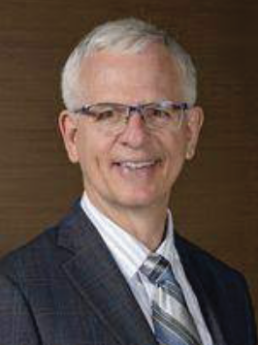 Lowell Byers
Lowell Byers
AdventHealth Shawnee Mission
Lowell Byers’ medical odyssey began when he left the vast expanse of western Kansas, and his hometown of Ulysses, for something other than a health-care career. His major at the University of Kansas would be chemical engineering. The closer he came to that goal, the more a realization sank in. “I was looking at what I wanted to do, and the typical thing for a chemist is to work for a company,” he says. “I considered that, but wanted more contact with people and wanted to be able to help them directly.” Upon further review, the relationship he’d had back home with his primary-care physician inspired him to shift gears, and he left KU with his medical degree, with a focus on internal medicine. Byers stayed in Kansas City for his residency at Saint Luke’s Hospital, set up shop for four years in Hutchinson, then headed off to Minnesota for a fellowship in gynecological oncology before coming back to Kansas City. In that field, he’s realized his goal of helping people in need—in some cases, during the darkest moments of their lives. “You’re talking about some patients who get really sick, who need a lot of work compared to many other patient types,” Byers says. He and his practice partners affiliated with Saint Luke’s for years before re-aligning with AdventHealth in 2015. In recent years, he’s noted what appears to be an increase in the numbers of patients with endometrial and cervical cancer. “I’m not sure why,” he says, “but these cases tend to be higher grade. As for the reasons, we have no clue, except endometrial is tied to obesity,” and the nation is experiencing an epidemic of that condition. He’s seeing more aggressive cancers that, in many cases, are presenting at later stages. The upside is that much has changed in treatments and tools, especially since robotic surgery was introduced in 2008. “That has really blossomed, and it helps women with minimally invasive procedures,” he says. “It used to be almost all cases required open surgery, but now, a majority of the endometrial surgery is done through robotics,” as are lymph-node procedures for patients who are often able to go home the same day. This recognition is gratifying, Byers, says, but it’s not entirely fair. “It’s really not me,” he says. “I’m only here because I have a team that makes everything happen.” He shares the credit with everyone from the front desk checking patients in to the assistants getting them ready, the nurse practitioners and nurses taking care of people, the infusion nurses and more. “When I’m tied up in surgery, I have a lot of help, including two very good partners,” he says. “I could not take care of these problems without them, or the hospital and its great support team of pathologists, specialists and staff who can help with all the problems these women face.”
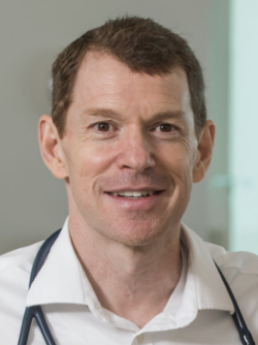 Larry Corum
Larry Corum
Olathe Health/The University of Kansas Health System
Law, not medicine, was the first inclination when Larry Corum was pondering the contours of a career. “I was a bit of a late-comer to medicine and was initially on a criminal justice path in college,” he says. “After taking a few biology courses, however, I was drawn into the world of biology, physiology, biochemistry, etc. Then the decision was: teach or go to med school?” The Lee’s Summit native had no family members working in health care to directly influence his decision, but the guidance of his stepfather would prove decisive. “Nearly all the males in my family are, or have been, plumbers,” Corum says. “My stepfather, who was also a plumber, got me interested in academic things—words, language, ideas. I later found biology and human physiology and was drawn in from there.” So, while the route to medicine wasn’t entirely unexpected, the final destination was. “Oncology took me by surprise,” Corum says. “In my oncology rotations, I encountered patients who were dealing with the most weighty and profound issues they had ever encountered, and the emotional piece of that was—and it may seem strange—very appealing to me.” One reason for that was the advance in the understanding of molecular biology, Corum says, followed shortly thereafter by designer drugs for treatment. “Now, over the past 15-20 years, we have seen a real revolution in the approach to cancer and cancer therapy that has resulted in major gains in quality of life and survival, with cure in many cases,” he says. High marks during his education and training, including his fellowship at Vanderbilt University Medical Center, could have punched his ticket anywhere, but “I returned to KC because I wanted to be near family and because it felt most like home,” Corum says. “The Midwest is a special place, and I’m happy most coast-dwellers are unaware.” For most of his career, Olathe Health was home, but the recent acquisition by The University of Kansas Health System means he’s part of a larger center of excellence in cancer treatment. “It’s an indescribable high to help someone navigate and escape cancer,” Corum says. “There’s a deep emotional bond that is forged over the years from diagnosis through treatment and long-term surveillance and, eventually, release from the oncology clinic.” The flip side of that are the unfortunate outcomes where the cancer is too advanced or aggressive. “Early in my career, I often had family members thank me for the care I had given to a patient who had, ultimately, died,” he says. “There were times I felt like a failure and undeserving of their praise. I later understood that the connections made and the sincere effort—sometimes in the face of insurmountable odds—were the crucial pieces. They knew that a full life is promised to none of us, and we can only make the best decisions possible at each juncture. So, we march forward—celebrating the victories and mourning the losses—recognizing that the victories are coming more and more often as the science advances.”
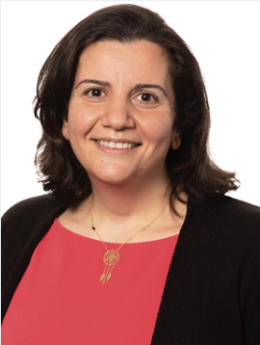 Rana El Feghaly
Rana El Feghaly
Children’s Mercy Kansas City
“Dr. Frog!” The excited preschooler running toward Rana El Feghaly was, in terms, a far cry from the 4-year-old who the doctor once treated for a large brain abscess. “I used to carry a frog stethoscope and had told her the story about how my first name means ‘frog’ in Spanish,” Feghaly recalls. “Knowing that she remembered me after a year and looking at her walking and talking perfectly well made me so happy!” In that moment, El Feghaly again received the validation of her choices: To become a doctor, to be educated and trained in America, and to pursue her passions in pediatric medicine in Kansas City. That runs all the way back to her youth in Lebanon, where she was the first in her family to choose medicine. “It was something I started considering when in school as I was (and still am) fascinated by biology and was inspired by some of my amazing schoolteachers to pursue this track,” says Feghaly, frequently citing the mentors who made her own journey possible. “Pediatrics was a given to me, as I loved working with children from the minute I started doing rotations in the hospitals,” she says. Hands-on treatment and meaningful research opportunities fit hand-in-glove with her love for teaching and microbiology—she also holds faculty appointments in the UMKC and KU schools of medicine. She took her fascination with infectious diseases and leveraged her training “to think about research and quality to leave a strong impact on the medical field as a whole.” Treating such cases is fundamentally different—and in some ways, more challenging—than trauma cases or chronic illnesses that are difficult in their own right. “I think what is fascinating about infectious diseases is the investigative work that goes on to help identify the problem,” El Feghaly says. “Of course, some of the infections we deal with are straightforward and have clear guidelines that help us manage them. However, many times, we get consulted on patients with unusual clinical presentations, and we have to truly investigate what may be causing the child’s illness. It is so rewarding when you find that answer and help the child feel better!” Over the years, as the pediatric system has expanded its geographic reach, she’s seen an increasingly diverse caseload of infection and disease types, further stoking her passion to understand. And sometimes, the impact of that treatment is life-altering. One of El Feghaly’s fondest memories involves an adolescent who had a severe infection and was treated in the hospital’s ICU. “She recovered completely and reached out to me a couple of years later and asked to shadow me in the hospital as she was inspired by the infectious diseases team,” she says. Why? “She had decided to become a doctor herself.”
 Neal Erickson
Neal Erickson
St. Joseph Medical Center/Kansas City Family Medical Care
This is a love story. “I absolutely love my career choice,” says family physician Neal Erickson. “Every day, I enjoy getting up and going to work. I love the diversity of the patients in my clinic. I see people from small towns outside of Kansas City, farms, suburbs, and the inner city. I see people of all ages and all walks of life. I love getting to know them and their stories and being part of their families. I truly believe I have an enormous family with all of my patients.” And that plays out in multiple venues: In the clinic at Kansas City Family Medical Care, at St. Joseph Medical Center, at Elite Physicals, his firm providing comprehensive assessments for business executives, and at Sporting Kansas City, where Erickson has been a team physician since 1995. “It was a matter of right place, right time,” he says. The CEO at that time knew the value of marketing and helped steer Erickson to the team. “It was a way to get new patients to grow my practice.” In addition, he says, he gets to work with internal specialists and helped create guidelines for head and heart injury and health. Now, he’s looking for his opportunity to engage with the FIFA World Cup medical team when the competition reaches Kansas City in 2026. With a solid Kansas City upbringing—Shawnee Mission East High School, KU for undergraduate, and then medical school and residency, “I always knew I would want to stay in Kansas City,” he says. “My family has been here our whole life, and my wife and her family are also from here. I knew we would be staying in town.” High-school aptitude tests suggested a proficiency in the sciences, which prompted Erickson’s father to suggest a number of professional tracks, including physician. Early on, primary care had a strong appeal; deciding between family practice and pediatrics was tougher. Then came his final rotation in med school, in family medicine. “That put everything together for me,” Erickson says “I was able to do a little bit of everything: medicine, surgery, pediatrics, OB/GYN, psychiatry. Then I knew that family medicine was my career path.” Even with so many irons in the health-care fire, Erickson is finding new ways to make an impact. Elite Physicals, he says, is partnering with War Horses for Veterans to provide services to U.S. Special Forces soldiers who come to Kansas City for a program to help them with their post-traumatic stress. “We have a very exciting program and are showing great early success,” he says, so much so that they are now building a clinic/retreat in the Stanley area of southern Johnson County.
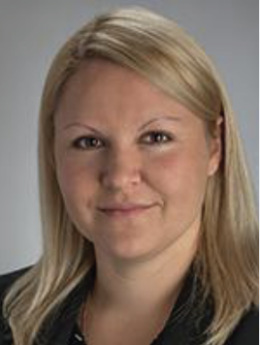 Deetra Ford
Deetra Ford
The University of Kansas Health System
Some kids just know what’s waiting for them out there. Deetra Ford was one of those, growing up in the tiny burg of Agency, Mo., home to about 600 other souls. “I do not remember a time that I did not want to be a doctor,” says Ford, a neurologist at the region’s biggest hospital. “After my medical school graduation, my first-grade teacher mailed me a copy of my future career choice in elementary school. I wrote my first paper on my future goal of becoming a physician.” And so it was, thanks to the six-year accelerated program at UMKC’s School of Medicine, and residency at the hospital where she works today. Oddly enough, one of the first steps on her path to health care was not in her Buchanan County stomping grounds but halfway around the world. “My aunt was a physician in Ukraine,” Ford says. “My brother had an asthma attack during one of our visits there, and I was able to see their medical system in action at the age of 5. I knew then that I wanted to be like her one day!” Following medical school, she found her way to neurology. “I loved the puzzle of neurology,” Ford says. “It was so interesting to see how a small area in the brain could control so much of the body and its functions. Dr. Daryl Thompson was my mentor, and he truly showed me what the field of neurology could be.” And, like most aspects of provider care, it’s a field awash with change as innovation unfolds with both the tools of her trade and the way they are applied. “When I started medical school, medication to treat stroke was just being utilized more readily. Now we are able to do multiple interventions for patients to reduce disability,” she says. “This has been true across many subspecialties in neurology. I think with the advent of AI tools, our abilities to care for patients will only grow.” An aspect of her work she cherishes most is the continuum of care with neurological patients. “I have had many cases over my career that have lived in my head and my heart,” Ford says. “I think we tend to gravitate toward the ‘saves’ or the ‘great outcomes,’ but some of my most rewarding patient encounters have been those where I have been able to be a part of a patient and family’s life for a decade providing acute care, then chronic care, and then end of life care for a progressive neurological condition. To have a patient and their family welcome me into their life in this way, to be a true part of their journey, that is where I feel validated.”
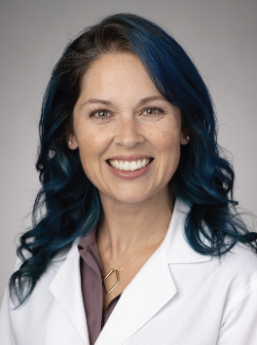 Megan Garcia
Megan Garcia
Research Medical Center
Most kids head off to college to test the waters and chart their life’s path. Not Megan Garcia: She was unwavering from Day One in UMKC’s accelerated med-school program. “I knew exactly what I wanted to be and had been undeterred from that focus for years,” says Garcia. “I had no plan B for any other career than medical school. It allowed me to be close to home and have the support of my family while also allowing me to help those in my community.” In that sense, it was the fulfillment of her childhood wishes to be able to do something—anything—to help a sister suffering from occasional seizures. “Watching her have seizures was traumatic for our whole family, as were times when my parents would need to leave us with family or neighbors while they rode to the hospital in the ambulance with her,” Garcia says. “I remember wishing that I could help her, but being so grateful to the physicians that treated my sister were able to. Whether or not they realized it, they made her life and our family life better. I wanted to help people in the same way.” She does that today at Research Medical Center’s Grossman Burn Center, attending to patients with some of the most painful injuries any human will ever experience. “We can all relate to my patients in that way, and it allows for connection through those shared experiences,” she says. “Sometimes, the key is finding a way to make special connections at bedside. “I need to build trust with my patients early,” she says, and being approachable is a must—something made easier, perhaps, by that blue tint to her hair. “Many patients try and suffer through their pain with burn, citing that they feel weak. I let them know that even small burns cause tremendous pain.” So she won’t let them hold back on complaints, a false nobility that more likely adds to and prolongs their suffering. When the successes do come, they can be profound, as with a woman she once treated, a drug addict who was suffering from what the public calls “flesh-eating bacteria.” “Little did I know after talking with her extensively that we went to the same high school at the same time,” Garcia marvels. “We lived in the same city growing up. I was able to save her legs when many others would have likely amputated.” A year ago, that patient came back to say thanks not just for that life-saving care but for the life-altering that followed. Says Garcia: “I will never forget her and how the kindness, encouragement, and understanding (we) showed her was what she needed to find a path in her life that she is proud of.”
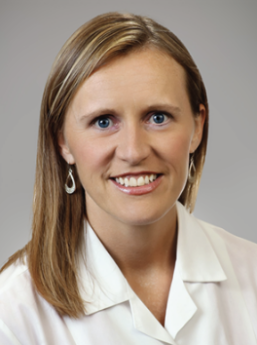 Elizabeth “Kay” Gerstner
Elizabeth “Kay” Gerstner
Liberty Hospital
The way these stories often go, a young child is influenced by a family member in health care—usually a doctor or nurse. The script flipped a bit with Kay Gerstner. Growing up in St. Joseph, she followed her childhood inclinations to become a physician—and inspired her mother, later in life, to join her profession by becoming a nurse. “I cannot remember ever wanting to be anything else in life, says Gerstner, who specializes in pediatrics, internal medicine, and primary care at Liberty Hospital. “I believe back to first or second grade, I declared to my parents I wanted to be a doctor, and since then, I never swayed.” She had no concept of the scope of the challenge ahead, but she intuitively grasped the mission: “I knew at a young age I wanted to help people,” she says. “I went to the doctor when I was sick, and the doctor made me feel better. That’s what I wanted to do: make people feel better and help them.” Gerstner is yet another member of the “UMKC Six” cohort, those who took the accelerated path through undergraduate and med-school instruction in six years. “The combined medical school program allowed me to cut off two years from school and start my profession sooner,” she says. “I was able to get into medical school without taking the MCAT as it was based on my high school grades, ACT scores, and achievements.” She was also surrounded by classmates who became lifelong friends. After graduating, she landed a top spot in an internal medicine-pediatric residency in Kansas City. There was no reason to leave the Midwest when I could continue to get the best training right here in Kansas City, then was drawn into specializing in both internal medicine and pediatrics because she could treat patients of all ages. “I especially love the complexity of adults and their ailments,” Gerstner says. “I loved being able to think critically with internal medicine patients and the intricacies of caring for adults. Pediatrics obviously is the flip side, and I loved being able to do the same thing with children but on a smaller scale. Children are the perfect balance to adults as even in their sickest moments they are always so bright, smiling, happy and keep you grounded and excited for their future.” Despite the rewards, she harbors a growing concern about how the role of care is viewed today. Because of the pandemic, she says, “there has been a great divide in the population, in those who fully trust and support medical care and those who do not.” The positive side? “There has also been a larger group of people who genuinely recognize the burdens and hardships of those working in health care and go out of their way to show their appreciation and gratefulness,” Gerstner says. “There are also more people who have taken the initiative to be more educated on routine illnesses and doing everything they can to protect themselves and maintain their health.”
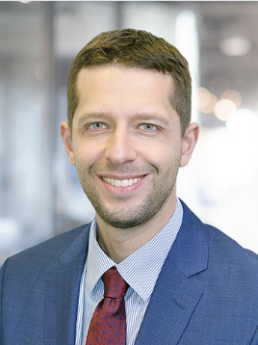 Benjamin Grin
Benjamin Grin
Kansas City University
He grew up in the KC area—a Blue Valley schools product—but Ben Grin turned Horace Greeley’s advice on its head to go east as a young man: Brown University for undergraduate and master’s in public health, Tufts University for medical school, and Brigham and Women’s Hospital/Harvard Medical School for internal medicine residency. When his partner, also a physician, took a residency position here in 2019, Grin packed his bags and came back closer to his family. He’s the product of two ophthalmologists but didn’t share that vision for himself. Volunteer work at a free clinic after college and some research in public health lit the match. “I fell in love with primary care and saw how rewarding it was to take care of patients and their families over time,” Grin says. “I also saw through my public-health research work that it was possible for physicians to take what they learn from individual patient care in order to address bigger public health challenges. I decided that I wanted to be the kind of doctor that could bridge those worlds of patient care and public health.” He’s doing that both through his role at KCU, where he also gets to scratch the academic/research itch and now in a newly created role of chief medical officer for the Kansas City Health Department. To that task, he brings his experience in primary care and internal medicine, shaped by his public health research and interest. “Working at a medical school has been an immensely rewarding part of my career,” he says. “First off, I love how medical students challenge me to be a better physician. They constantly ask me questions that help me learn and provide better care to my patients.” He sees patients at the KC CARE Health Center, which treats patients regardless of insurance status; about half of that caseload is general adult primary care, and the other half involves adults living with HIV, along with substance abuse cases. But, he says, “One thing I have discovered as a primary care doctor is that my patients’ health needs often cannot be addressed within the walls of a clinic. It is very hard for someone to successfully manage their HIV or diabetes when they are facing challenges like homelessness and food insecurity.” That inspired his interest in pursuing the health department role. “Community health workers and social workers can help, but there aren’t enough resources for those in need,” Grin says. “As the chief medical officer of the health department, I have the opportunity to work with our leadership team to get at the root causes of what makes people unhealthy and to help make change happen.”
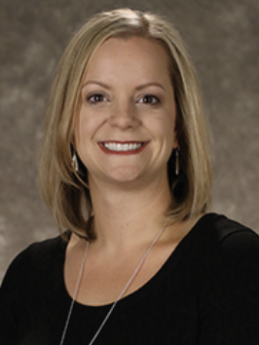 Dawn Heizman
Dawn Heizman
North Kansas City Hospital/Meritas Health
Dawn Heizman figures she was about eight years old when she approached the concession stand at the ballfields in her hometown of Mexico, Mo. She was there to buy herself a slushie. She came away with much more. “The woman that took my order had never met me—she took one look at me, knew exactly who my mother was due to our resemblance, and started praising my parents for the care they provided,” says Heizman, whose mother was a nurse and stepfather was the town’s only gastroenterologist. “I knew at that moment I wanted to find a job that I was passionate about, but that also allowed me to help others. Medicine was the only career I ever entertained.” The desire to get there—ASAP—led her to the accelerated program at UMKC’s School of Medicine; “that allowed me to achieve my dream faster than the traditional route,” Heizman says, and the clinical experience with an assigned docent/mentor during her first year was a unique program feature that put the school at the top of her list. The period after rotations was almost like a kid-in-candy-store: “My love for medicine was evident in all of my rotations,” Heizman says, but it was her final one, in obstetrics/gynecology, that took. “I was leaning towards becoming a general surgeon,” she says, but “within one week of starting my OB-GYN rotation, I fell in love with the specialty.” She saw in it the ability to build long-term relationships with patients—seeing them as young adults, delivering their babies, caring for them through motherhood and even into their later years. “It is a truly rewarding specialty and I am honored to be a part it,” she says. “Women’s health is my passion, and I take great pride in the care I provide to my patients.” At that point, the choices became geographic. “Kansas City is magical—the food, the culture, and (of course) the CHIEFS,” she says. “When I graduated, I knew that I wanted to find a hospital and a practice that supported my passion to serve others. I found that in spades at North Kansas City Hospital.” There’s a fair amount of runway left in her career, but already, her practice has been reshaped by innovation. “The medical profession is changing at a rapid pace—technology continues to improve patient care,” Heizman says. “In just 10 years, I went from using paper charts to a complex, integrated electronic medical record that is shared by outpatient and inpatient settings, and even communicates with EMRs of other health systems.” Advances in devices, as well, have been, in her assessment, “astonishing.” “Devices that decrease the need for invasive surgery shorten operating time, decrease hemorrhage, decrease infection, etc. The constant climate of change continues to fuel my passion for medicine—every innovation helps me provide the best possible medical care.”
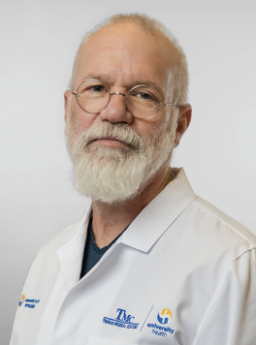 Stephen Jarvis
Stephen Jarvis
University Health
“A bolt of lightning.” That’s how Stephen Jarvis describes the moment when, as a fine arts major at Washington University in St. Louis, he realized he wanted to be a doctor. His pursuit of a career in photography yielded to an instructor’s comment that being a modern artist wasn’t what it used to be—that the craft required polymaths with the ability to see possibilities where others didn’t, like doctors. “That’s when it clicked,” Jarvis says. “I wanted to be immersed in people’s lives and lifelong learning.” Medical school wasn’t going to happen at one of the nation’s most prestigious universities, which had a price tag to match its reputation. “So I went to Southeast Missouri State, with tuition of $150 a semester, and hit the books,” he says. That was the first step in a journey that led him to a career in psychiatry, practicing at University Health in Kansas City. Brief consideration of internal medicine and infectious diseases quickly took a seat while on his rotations. “I did psychiatry and fell in love in a way I never expected,” he said. The practice at that time wasn’t a popular choice for residents, “but I just loved it. I got to be a part of people’s lives in a way I never could with the other rotations. You would have some interaction with people there, but then they’d be gone; psychiatry was so bound up with people in their lives. It felt very gratifying. I’m still not good at being a polymath, but I got something out of that wish.” After a residency stint in Pittsburgh, he ended up back in Missouri “by accident and fate,” he says. Though he preferred the Steel City, his wife wanted to come back closer to their Missouri roots, and he signed on with Heartland Health in St. Joseph, now Mosaic Life Care. “I ended up being the only psychiatrist for some people hundreds of miles away and working 100-plus hours a week.” More than 20 years ago, Truman Medical Centers, now University Health, offered a chance for a more balanced life and career. “This allowed me and my colleagues to work with people in the way we need to, to give a lot of support,” Jarvis says. “There are a lot of ill, poor people who end up homeless, in jail, in despair. I could never give them what they need alone, but at University Health, we have case workers, counselors, outreach and housing people, and so many other resources. It’s very gratifying.” Stresses across the population since the onset of the pandemic have added to his workload. “We certainly saw a lot of that, though it has died down somewhat,” Jarvis says. “Still, you had people who lost loved ones, who lost their jobs, who may have lost their homes—we saw a lot of people in distress. And a lot of internal people, here on the staff, got COVID as well, long-term cases of it, stress on their own families. We saw a lot of people with depression and financial anxieties.”
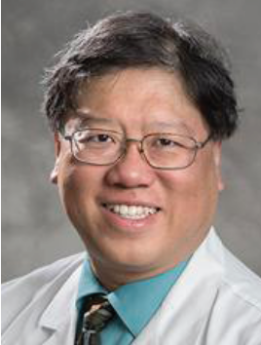 Andrew Kao
Andrew Kao
Saint Luke’s Health System
Both of his grandparents, an uncle, an aunt, and a pair of cousins—doctors, all. With a family history like that, is it any surprise Andrew Kao ended up in medicine? “I did consider getting a Ph.D. in chemistry,” he says, “but realized that my passion is working with people rather than solving problems in the lab—nothing wrong with that; medicine is just more suitable for my personality. My parents always encouraged me to do what I like the most and didn’t pressure me to be in any particular career path, but with the long history of medicine in my family, it was in my blood.” Raised in Minneapolis, Kao worked in a hospital while in high school and participated in Explorer Scouts with a troop at the Mayo Clinic, further sealing his interest. He scored a prized slot at the University of Chicago School of Medicine, chose cardiology coming out of his residency, and eventually landed at Saint Luke’s, where he’s the medical director for the highly regarded heart transplantation program. “I quickly became drawn to the lifesaving nature of transplant—it presented a lot of challenges and allowed me to use my internal medicine training as well,” Kao says. “Seeing my first patient saved by a transplant really solidified my desire to pursue this line of work.” He made his way back to the Midwest thanks to a health-care recruiting firm and found the fit was still good. “I really like the friendliness of Kansas City, and the traffic is definitely much better” than back east, he says. “Everyone collaborates to achieve the highest standards of care, so it really pushes me to try to perform my best as part of the transplant team.” Still, the work is not without challenges. “I think there are more and more regulations which really constrain how we practice,” he says. “I continue to be amazed that we practice in the greatest and wealthiest country in the world, and yet there are a sizable number of patients who are without insurance or underinsured, which really limits their access to lifesaving care. I am very fortunate to be surrounded by a dedicated and amazing group of nurses, social workers, and other professionals who work together to help each patient to the best of our ability.” While directing the program, he’s not on the front lines—his cardiology skills address patients’ needs before and after surgery. “I often joke with patients that I faint at the sight of blood,” he says. Every day, he says, “work affirms my career choice. I guess I could have made multiple other career choices and would have probably done well with them, but I can’t think of another career or professional choice that provides so much satisfaction. Seeing patients go from near death to having a new lease on life and being able to get married, finish school, have children or grandchildren, etc., is so touching, and I often tell my patients that seeing them do so well is thank you enough for me.”
 Jason Knight
Jason Knight
Saint Luke’s Health System
The rigors of medical school are well-known; less familiar to most people are the challenges that new med-school graduates face during residency training that can run from three to seven years. For Jason Knight, though, residency was a time to assess fascinating opportunities at nearly every turn. “I enjoyed every single clinical rotation,” he says. “I was torn between pursuing a career in surgery, which would mean leaving my passion for medicine behind or pursuing a career in internal medicine, leaving my passion for surgery behind. I was fortunate to have a rotation in gynecologic oncology, where I quickly realized that the field required both mastery of surgery and internal medicine. The rest is history.” The most recent chapter of that history is playing out at Saint Luke’s for this native New Yorker and Yale med-school grad, following a 10-year stint at the Cleveland Clinic. Before any of that, though, Knight’s closest connection to medicine came as a science teacher. “My interest in medicine evolved over time from an appreciation for the relationship between our experiences, our environment, our biology, and our health,” he says. Teaching before taking the health-care path “helped me to understand that the greatest gift I can give to patients is an understanding of their disease and how they can live their best life despite a bout with illness.” The framework for that was the number of curious and inquisitive people who surrounded him in his youth, he says. “My mom worked in a college library, and my dad is a retired telephone technician. So books and technical equipment were readily available to me. That, combined with my own curiosity about living things, led me to study biology and eventually medicine.” Saint Luke’s, he says, allowed him to follow what he calls a guiding principle in life: “Always follow opportunity. When I saw the high-quality clinical care, innovation, and collaboration that was happening at Saint Luke’s, it became clear to me that this is where I need to be. It was the perfect next step for me to contribute what I’ve learned so far to a team and a community that is accomplishing great things.” And doing it in difficult circumstances as a provider. “Cancer is a devastating diagnosis, and it’s incredibly disruptive to younger and older people alike,” he says. “My biggest opportunity when caring for patients is to help them find a path that aligns with their goals and values. Sometimes, the ‘perfect’ path doesn’t present itself, and that can be a difficult moment.” Yet in those moments, he says, there is often an opportunity to see new possibilities in the path that is available that neither patient nor physician might have been open to at first.
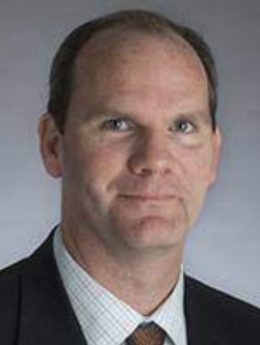 Sean Kumer
Sean Kumer
The University of Kansas Health System
The gauntlet, if you will, was thrown down at the feet of Sean Kumer by the chief resident after he’d finished medical school and started his rotations. “He told me that if you like anything the same as or better than surgery, do it because surgery was very difficult.” Challenge accepted: “I loved every rotation, but just liked surgery a bit better,” he says. But there’s surgery, and there’s the next-level surgery of transplantation. That’s where Kumer makes his impact on the region’s biggest academic medical center, as program director for the transplant surgery fellowship and as surgical director of liver transplantation. His interest in that field also goes back to his training at the University of Michigan Medical School. There, working in general surgery, he says, “I was exposed to some pretty academic and hard-working surgeons and saw great, complex cases. I was drawn to transplant because it was both technically and mentally challenging, as well as physically challenging. I liked that demand.” While on staff at the University of Virginia Medical Center, he was recruited to the health system here in 2011 and took that leap, he says because he “saw the opportunities for personal and professional growth. I felt like the health system had priorities that matched mine in terms of patient outcomes, quality and safety, putting patients at the center of everything you do. That meshed well with me and my values.” In one of the most demanding surgical niches, he’s been witness to impressive advances in both tools and techniques. In addition, he says, “anti-rejection drugs have improved significantly, and with the cancer part, the chemotherapy has improved greatly.” All of those factors, he says, have helped improve outcomes for patients who are often in dire situations. “People who come to you in the clinic are scared; they need help,” he says. “Whether that’s for transplantation, whether it’s for cancer they have, they’re hoping you can shepherd them through unknown territory. When you’re able to accomplish that, able to make people feel comfortable and confident in their care—at the end of it, there’s no greater feeling than when someone simply says thank you. When you get them through all their transplant and care, it’s just a great feeling—like hitting that one perfect golf shot.” It’s a great feeling on the other end of that relationship, as well. “I’ve had opportunities where someone 10 years out will see me out in society, and they’ll say, ‘I don’t know if you remember me, but you saved my life.” I’ve saved every one of the notes I get from my patients like that, and when they come across your desk or come from a family member who thanks you for the life of their husband, wife, father, or brother … those are really touching.”
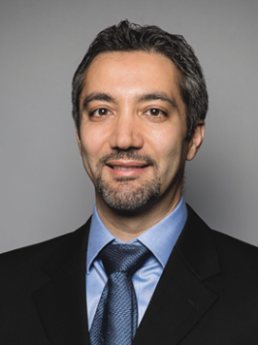 Salah Najm
Salah Najm
Stormont Vail Health
Salah Najm’s fascination for biology, medicine, and understanding disease processes took root in his native Lebanon, but he sees health care today through a lens polished by exposure to medical practices around the world. He picked up something from different countries and cultures, he says, through a “love of travel that sent me to Austria, Vienna, and the United States (Los Angeles, Boston), where I did electives in various medical specialties,” as well as volunteer work for the Red Cross and free clinics for the underserved, going all the way back to his high school and college years. College at the American University of Beirut yielded a bachelor’s in biology, and for a while medical engineering and medical software were possibilities. “Eventually, I realized that my true passion lies in patient care,” Najm says. “I decided to continue in bedside medicine and pursue a degree in critical care, as I found it deeply fulfilling to connect with patients, assist in their healing process, and communicate with their families. Seeing the positive impact I can make in people’s lives is truly rewarding.” He applies those skills as a pulmonologist/sleep specialist for Topeka-based Stormont Vail, home to one of the region’s largest medical centers. “Pulmonology and critical-care medicine is a broad specialty and not typically limited to one organ,” he says. “Critical care involves caring for the sickest patients, understanding their whole body physiology, and managing all organ failures. As a critical-care physician, I provide one-to-one care for patients and build connections with their family members. It is deeply fulfilling to help patients and their families navigate the most challenging illnesses and support them during such difficult times,” he says. His search for a career base was a two-for-one exercise: His wife is a pediatric oncologist, so Stormont Vail offered what both were seeking when they arrived in 2012. Among the more exciting advances in his line of work, he says, are the big changes wrought by ever-smaller devices. Those have led to minimally invasive (nonsurgical) options to treat lung cancer, treating COPD by inserting valves into the airways, managing complicated infections with small catheters, and improving sleep with an implantable device, he says. “As medicine evolves and new treatment options are available, we are seeing a shift in the nature of diseases,” Najm notes. “Conditions like simple infections, asthma, and early-stage cancers can be quickly treated and managed. However, we are now challenged by more complex cases and higher severity of illness.”
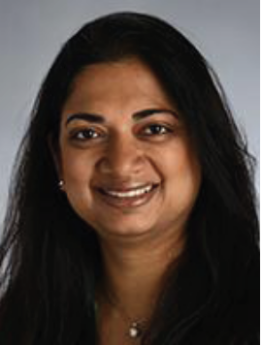 Madhuri Reddy
Madhuri Reddy
The University of Kansas Health System
Self-proclaimed science nerd Madhury Reddy doesn’t know precisely where she took that first step toward becoming a doctor, but she always had a clue right up to her time at Ohio State University. “When I was doing my bachelor’s studies, I loved science so much,” she says. “I was going for biochemistry, so I knew it would be something science-y.” Then, she was introduced to laboratory work. “I realized I needed people contact. It made sense to go into medicine,” she says. After her family’s immigration from India, she did her final year of high school in Flint, Mich., before setting her sights on Columbus. The foundation, though, was set in her own youth. “I always had good experiences with physicians, and my uncle was a doctor,” she says. Following medical school, “I was a bit naive about what specialty to apply for,” she says. “I thought I could deliver babies, then take care of them, but in medical school, that’s not a thing”—the way it usually works here you choose between delivery and pediatrics. Ob-Gyn work was her third choice, initially behind general medicine and surgery. But, the latter didn’t involve much long-term patient contact. Turns out, Door No. 3 was the right one all along. “Ob-Gyn was the perfect mix,” she says. “I loved the colleagues, the patients, the variety of things you do in surgeries, the deliveries. Everything kind of mixed and matched.” Just as with surgeries, she notes, no two deliveries are exactly alike. “Every case is a problem-solving challenge,” she says, and not just with the patients. Bringing new life into the world means “you also have to make a big decision not to see half the population, ever,” she says. And on top of that, “you learn the limitations of how research is not geared to women as much. But the more I got into it, the more I knew it was the right fit.” After working in private practice outside Omaha while her husband was in his medical fellowship at Creighton University, she realized something was missing: the academic piece. She wanted to be able to teach, as well. Kansas City proved to be the perfect market when they were ready to move in 2006. Her run at the health system, she says, “has been amazing. When I joined, I was the second woman in the department, and we had only 12 people. Now, we’re about 37.” Most physicians can point back to pinnacle outcomes in complex cases, treatments that proved life-saving or life-altering for patients. Reddy has her own catalogue of successes, but what really confirms her career choice, she says, is what she hopes to instill and inspire in others. “Training the next generation is what validates my choice,” she says. “Being able to teach our next set of residents, that’s the true art for me in terms of why I do what I do. Every patient is so different and unique, and I’m part of the journey. What we do helps the patients, and that’s our duty.”
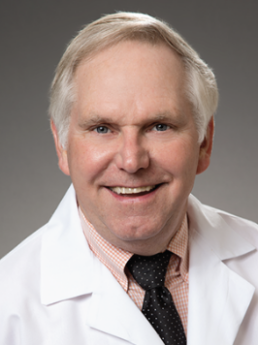 Kirk Ridley
Kirk Ridley
Belton Medical Center
Belton, Mo., wasn’t a small town when Kirk Ridley began practicing medicine there more than 40 years ago, but it wasn’t far from one. Since then, it’s roughly doubled in size, and Ridley has been there throughout as a pillar of health care for residents and as a civic rock, supporting service clubs, youth development causes, the local historical society, and more. In every sense of the title, he’s been a community doctor—local medical lore holds that he was the first physician to admit a patient when the current medical center opened in town. Born and raised in this area, he found Belton in the 1980s to have much the same allure as the southern Johnson County of his youth. “I love the friendliness of its people and the small-town atmosphere of Belton,” he says. “My ambition was to strive to be present where I thought I could really help people.” A brief flirtation with the idea of becoming a lawyer yielded to that commitment to serve. “My love affair with the practice of medicine really began when I started medical school at KU, and it has continued and deepened to the present day,” he says. “I am now 70 years old, and I can’t even contemplate retirement, as I enjoy the practice of medicine so much.” So, it’s no surprise that after earning his M.D., he headed off into family practice. That field, he says, “always appealed to me because you really get to know the people that you are taking care of. First, you try to take care of their immediate medical problem, calm their fears, and assure them that they won’t be fighting their illness alone. Then, after that, the real fun begins as you can really try to get to know the person.” He’s learned that every patient has a story and almost everyone has a passion. “I am usually able to really get to know the patient, their likes and dislikes, and their history and their hobbies or passions,” he says. “Many of my patients have become good friends over the years, and some even like family.” Like most physicians trained during his era, he celebrates the technological advances that have improved care—same-day availability of specialists’ consultations, CAT scans, and MRIs, and vastly improved pharmaceutical options among them. The downside? Again, many a seasoned veteran will cite concerns over the battles required to get insurance payment for necessary services and the ever-present web of regulations to navigate. Despite those, he says, “being a doctor “allows me to indulge in my passion, and that is to try to help people. I seriously don’t know what can be better than that.”
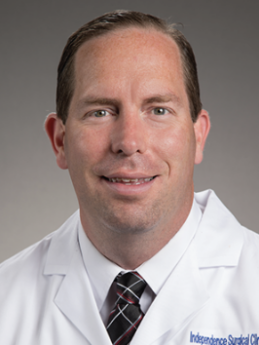 Jared Smith
Jared Smith
Centerpoint Medical Center
A metropolitan area can, at times, be more like a small town when you’re a physician in a crisis situation. Just ask Jared Smith, a surgeon who was still in his first year back in Kansas City and stepped up to assist a group of doctors and surgeons. The patient was a woman in shock because of an uncontrolled pelvic hemorrhage. The team was able to stop the bleeding, and then … “After the procedure, I realized she was a family friend,” Smith recalls. “As years have gone by, I have come to realize more what it means to serve my community because it seems that we are all either friends, neighbors, or interconnected in some not-too-distant way. That is why I do what I do.” He does that at Centerpoint Medical Center in Independence, which CEO Bret Kolman says has one of the busiest trauma centers in the region, often receiving patients from out of the area and even out of state through Life Flight Helicopters. In those critical times, he says, Smith’s “exceptional dedication, unparalleled surgical skills, passionate commitment to both patient care and medical advancements set him apart as a remarkable physician.” Smith was just 12 years old, living in Columbia and delivering newspapers one day when he came upon a crash site where he saw police pull a man out of a wrecked car. “I wished I could help and wished I had the ability to take care of that man when he got to the hospital,” he remembers. That was the seed. The flowering came several years later when a surgeon—the father of a friend from his high school football days—invited him to watch an operation. “It was then,” he said, “that I knew I wanted to be a doctor.” Following his residency in Colorado, he and his wife jumped at the chance to come back home in 2008. Since then, he’s been witness to a wave of technical changes in surgery, especially with the Da Vinci robotic system. He says it “has allowed me to perform procedures with tiny incisions, but with the visualization and exposure that one can achieve with open surgery, and in some cases, with better visualization and exposure.” In some cases, as with various hernias, “the quality of the procedure exceeds that of the open procedure.” It’s been exciting to be a part of that, Smith says, but the real excitement in his field may just be getting started. “I anticipate that in the future, artificial intelligence may play a role in surgical procedures in some fashion as innovation continues,” he says.